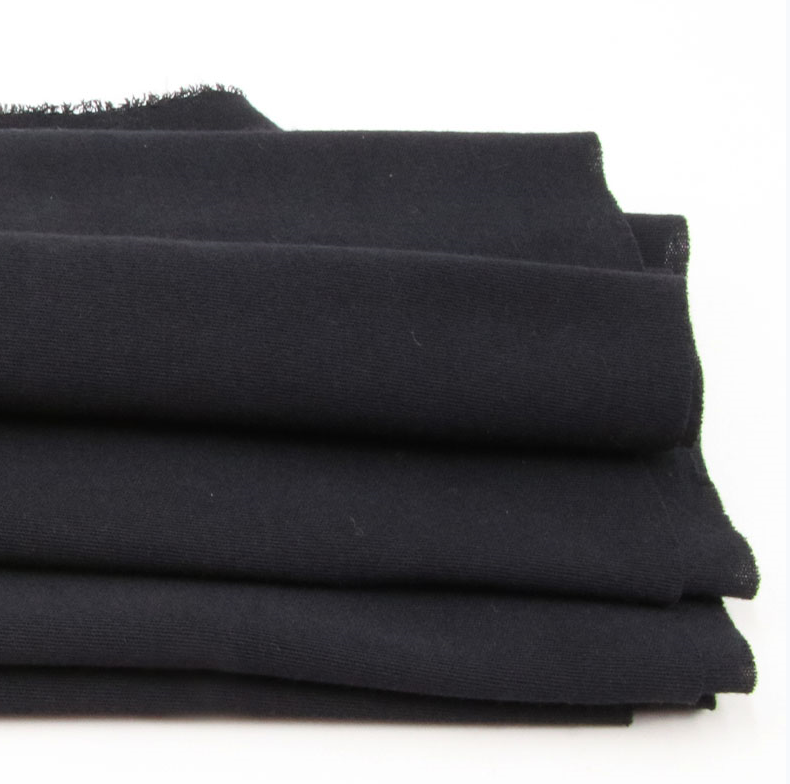Core characteristics and selection guide for high-performance aramid knitted fabrics (1414 vs 1313) in personal protection and fire fighting industries
Jun 20,2025

Para-aramid 1414 Knitted Fabric
Characteristics and Advantages:
High Strength and High Modulus
Tensile strength is 5-6 times that of steel wire, high modulus, and excellent impact resistance.
The knitted structure gives it flexibility and elasticity, suitable for dynamic protection.
High Temperature Resistance
Long-term use temperature is approximately 250℃, short-term temperature resistance can reach 500℃ (decomposition without self-ignition).
Chemical Corrosion Resistance
Stable against most organic solvents and acids and alkalis, suitable for harsh environments.
Cut and Abrasion Resistance
Often used in cut-resistant gloves, bulletproof vest linings, etc.
Original Yellow Characteristics
No dyeing required, retaining the original fiber properties (dyeing may reduce strength).
Application Areas:
Personal Protection: Bulletproof vests, stab-resistant clothing, cut-resistant gloves.
Industrial Field: High-strength ropes, conveyor belts, aerospace composite materials.
Sports Equipment: Racing suits, mountaineering equipment.
Para-aramid 1313 Knitted Fabric
Characteristics and Advantages:
Excellent Flame Retardancy and High Temperature Resistance
Limiting Oxygen Index (LOI) ≥28%, long-term temperature resistance 200℃, does not melt or drip when exposed to fire, forming a carbonized layer to isolate oxygen.
Heat Insulation
Low thermal conductivity, suitable for heat insulation protection in high-temperature environments.
Softness and Comfort
The knitted structure is breathable and is often used in close-fitting protective equipment (such as the inner layer of fire suits).
Dyeing Possibility
Black is dyed through a special process (aramid is difficult to dye and requires high temperature and pressure), which may sacrifice a small amount of heat resistance, but meets specific appearance requirements.
Application Areas:
Fire Protection: Fire suits, fire hoods, escape blankets.
Industrial Protection: High-temperature workshop work clothes, arc protective clothing.
Electrical Insulation: Motor insulation layer, high-temperature resistant cable covering.
Core Difference Comparison between Para-aramid 1313 and Para-aramid 1414
Molecular Structure
Para-aramid 1414 knitted fabric is a rigid straight chain
Para-aramid 1313 knitted fabric is a flexible chain
Mechanical Properties
Para-aramid 1414 knitted fabric has ultra-high strength and high modulus
Para-aramid 1313 knitted fabric has moderate strength and focuses on flexibility
Temperature Resistance
Para-aramid 1414 knitted fabric has short-term temperature resistance of 500℃ and long-term temperature resistance of 250℃ (resistance to instantaneous high temperature)
Para-aramid 1313 knitted fabric has long-term temperature resistance of 200℃ and better flame retardancy (resistance to continuous high temperature)
Processing Difficulty
Para-aramid 1414 knitted fabric is difficult to dye and is mainly in its original color
Para-aramid 1313 knitted fabric can be dyed (black requires special process)
When choosing Para-aramid 1414:
Scenes requiring impact resistance, cut resistance, or high dynamic protection (such as bulletproof and military and police equipment).
When choosing Para-aramid 1313:
Scenes requiring continuous flame retardancy, heat insulation, or comfortable breathability (such as fire suits and industrial high-temperature protection).
PREVIOUS:
Related Posts
Contact Us
E-mail:
gdkaidun@163.com
Phone/WeChat:
86-131-3828-6677
Address:
Room 401, Building 21, No. 1, Keqing Road, Yundonghai Street, Sanshui District, Foshan City, Guangdong Province





